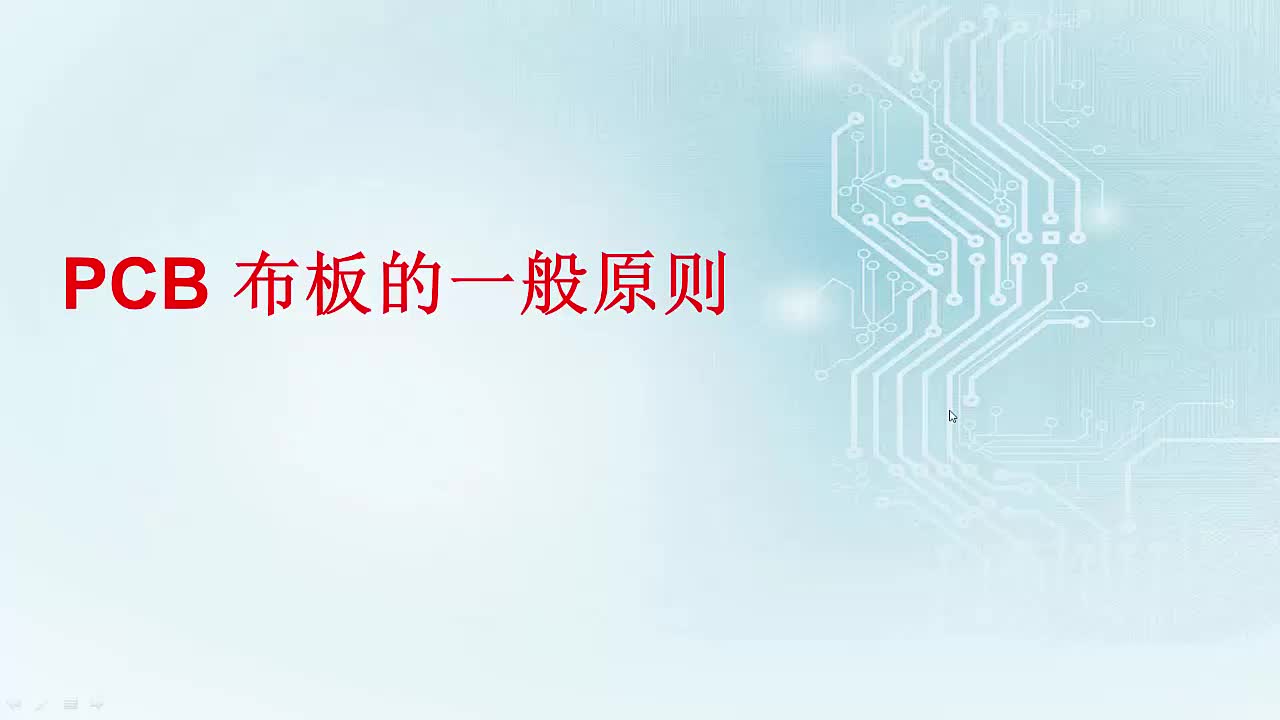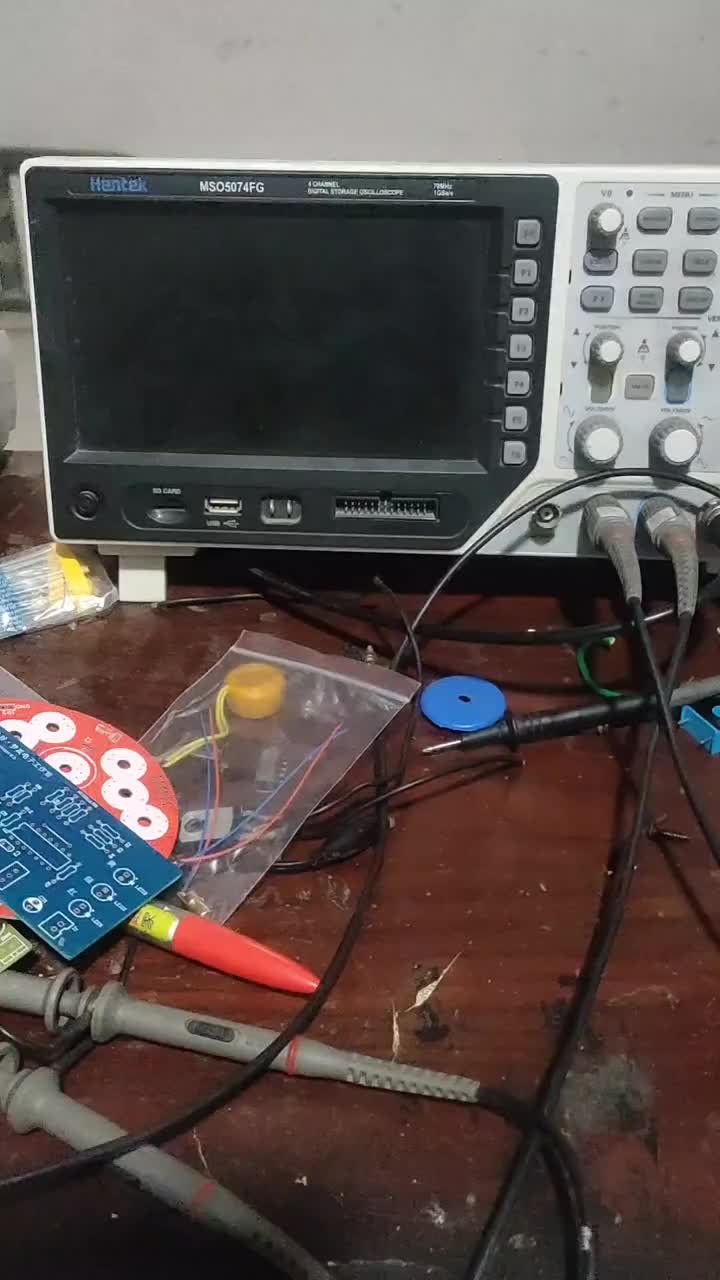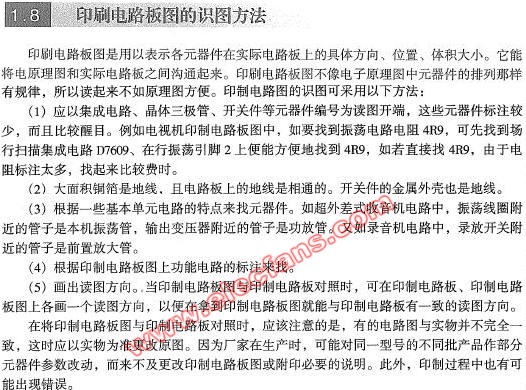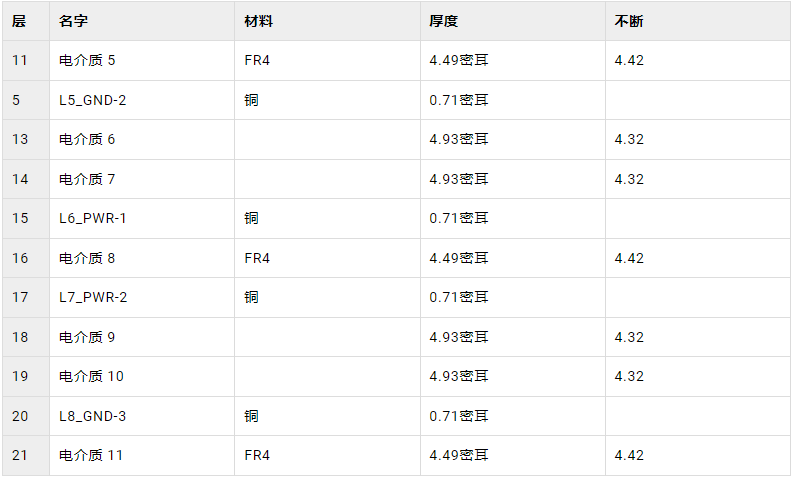印刷电路板设计的最佳实践 Best Practices in Printed Circuit Board Design
The manner in which electronics as consumer devices and industrial machinery has become an integral part of our daily lives needs little introduction or description. From complex machinery in factories, to computers, engineers have transitioned their ideas to conception of such devices through various technology including small rugged, inexpensive and reliable printed circuit boards (PCBs).
The design engineer faces a number of hurdles in the design of such devices, most notably the fact that traditionally each stage in their design flow is segregated, between part-selection, design, and validation.
National Instruments provides a complete PCB design platform with the ease-of-use and power of NI Multisim capture and simulation, and the integrated NI Ultiboard layout and routing environment. Built upon a platform which simplifies the board-level simulation process with intuitive SPICE analyses and an expandable measurement interface, the complete PCB solution from NI also provides the unique capability of integrating the PCB design flow with real measurements.
As we will explore through this article, it is the unification between design and measurements (a concept known as integrated design and test) which provides the basis of for better addressing the hurdles in the design, verification and production of printed circuit boards.
This article is an overview of the design flow and the Best Practices in using the features of NI Multisim, NI Ultiboard and NI LabVIEW to transition from schematic, simulation, layout to manufacturing.
Table of Contents
- Introduction
- Part Research and Selection
- Best Practices in Capture
- Best Practices in Simulation
- Best Practices in Layout
- Best Practices in Prototype Test
- Best Practices
Introduction
In the PCB design flow, engineer encounters a number of steps which are ever present. These steps are common to the design, validation and fabrication of all PCBs, around the world.
In analyzing the overall PCB design flow it becomes apparent that the major productivity gap is the lack of integration between each of these design steps. The laborious task of transferring data, reproducing work, and being unable to effectively leverage previous data adds time and inefficiency to the creation of circuits.
One may ask what are these steps in the design flow, and how does the lack of integration impact the engineer? Let us look at the traditional flow in Figure 1 below.
[+] Enlarge Image
Figure 1 - The Traditional Design Flow
There are effectively four stages during the PCB design flow:
- Part Research and Selection
- Schematic Capture and Simulation
- Board Layout
- Verification and Validation
The brick walls in figure 1 represents isolated stages in the traditional design flow. This isolation means that through the PCB design flow different applications must be used, or data needs to be manually manipulated for the next stage.
Traditionally step 2 (schematic capture and simulation) and step 3 (board layout) are integrated, usually as a part of a single corporate tool-chain. However, every PCB design flow begins with part research, and ends with prototype validation. Both stages are separate and isolated from these core design steps. This becomes of concern for many engineers because there is inherently a large degree of iteration throughout the design of a PCB. The lack of integration means that this "iterative design" becomes more difficult and time consuming. The goal is therefore to remove those “brick walls” of isolation and to integrate the PCB design flow, by connecting part research with the design and prototype validation stages (as seen in the figure 2 below).
[+] Enlarge Image
Figure 2 - An Integrated Design Flow
In this article, we will investigate a design procedure that is integrated as in figure 2 above. As you will soon see it is through the type of design flow that integrates traditionally fragmented steps, that a foundation of best practices is developed.
Part Research and Selection
The most fundamental building part of a design is the physical component (such as resistors, operational amplifiers, transistors and digital components). Part research and selection requires the evaluation of components to investigate how each will work as a part of a design topology.
Information on device performance can be found at a number of online resources that house datasheets. The datasheet contains information such as operating points, switching characteristics, design considerations etc…
Some web-sites where datasheets can be found include (but are not limited to):
- DatsheetCatalog.com
- Analog Devices Inc.
- Texas Instruments
- ON Semiconductor
Most component manufacturers also have datasheets available on their web-site.
[+] Enlarge Image
Figure 3 - Example of datasheets
Many engineers like to gain a better understanding of how a component operates to complement the information on a datasheet. The first, time consuming method is to purchase the various components and physically breadboard a prototype to interrogate and analyze the device. This can require purchasing multiple devices and breadboarding at the most preliminary stages of the design process.
The second and more advantageous method begins to integrate the fragmented nature of the traditional PCB design flow. A capture and simulation environment can be used to select a device and simulate its overall behavior. Performance can be evaluated without needing to purchase and physically breadboard.
For example, in NI Multisim parts can be selected from a database of components, each of which has a simulation model associated with it to visualize operation. In the capture and simulation environment a design can be quickly built and simulated to view the overall operation of a device. The fact that no breadboards are required means a shortened component selection process.
View the components available in NI Multisim
Best Practices in Capture
Capture is fundamental to the design process. The schematic capture environment is a CAD-like design interface in which graphical symbols of circuit components (such as op-amps, resistors, transistors, processors etc…) are placed and connected together to form a design topology (as seen in Figure 4).
Figure 4 - Schematic Capture
In a schematic the design is represented in the form of symbols (in the ASCII and DIN standard) connected together by wires (called nets). Nets are the second fundamental element of a schematic (after parts) and connect individual components into an actual design.
Every schematic begins with the selection and placement of components, and as a result an engineer’s initial task is to search their capture tool’s database for specific components. Many traditional EDA tools are lumbered with disorganized databases that are difficult to navigate. In these tools, component selection is a hurdle in the design process. In Multisim, all 17,000 components in the master database are logically organized into easy-to navigate groups . These groupings reflect the type of device and functionality, so that components such as diodes are in one group, while op-amps populate a separate analog group. This logical organization mirrors the way most manufacturers present their own parts libraries, providing an intuitive interface that an engineer has encountered many times before.
Inherently the design process is quite involved as an engineer continuously navigates to the database, searches for and picks a part, and then wires it into the design. In many traditional EDA tools, an engineer will quickly realize that wiring requires them to repeatedly switch between placement and wiring modes for each new component and wire to be placed. In Multisim (figure 5), this tedium is eliminated by a modeless environment, where the mouse cursor’s proximity to pins and other connectors will automatically allow the drawing of wires. The ability to quickly create connections without constantly switching between drawing modes makes the capture process much more efficient.
Figure 5 - The NI Multisim Schematic Capture Environment
Key Resources
The following resources provide more information about schematic capture in NI Multisim:
- Advanced Capture and Design
- Repeating Common Circuits in NI Multisim: Hierarchical Blocks
- Autoconnect Passives in NI Multisim
- Creating Bus Vectors in NI Multisim
- How to Use the Filter Wizard in NI Multisim
Best Practices in Simulation
Upon capturing a schematic, circuit designers are able to utilize simulation in the form of SPICE and XSPICE simulation to predict the behavior of a circuit and analyze the effects of various components and signals upon the design. This is an important step in the modern design process because it allows one to emulate the performance of a device before it is even physically built. A design topology can be tested immediately to see if it needs to be modified. Simulation can therefore save both time and money. Simulation can help uncover the most uncommon flaws quicker, and prior to costly prototyping.
However, what exactly is simulation? Simulation is a mathematical model, for example of a transistor, that approximates its real-world counterpart at specific conditions and is accurate for certain temperatures or operating conditions.
- Learn more at the SPICE Simulation Fundamentals page
- Understand more about Cosimulation in NI Multisim
The accuracy of the model defines how closely a component will resemble the real-world performance in the simulation environment, and thereby will affect an engineer’s analysis of a design. Certain models for BJTs, FETs and operational amplifiers are defined to accurately predict the behavior of the device with a great deal of precision such that it effectively mirrors the physical real world. These models tend to encompass various parasitic effects and complex behavior.
Traditionally EDA tools require engineers to have an intermediate, to intimate, knowledge of SPICE (or one of its proprietary variants) in order to effectively simulate circuit behavior. SPICE is a text-based language, and therefore an engineer may have to write multiple lines of code to simulate a device. This can be time consuming and difficult. The graphical nature of NI Multisim removes the difficulty of SPICE and provides engineers from novice to expert levels an easy interface to simulation.
In NI Multisim during the schematic capture process industry standard symbols (ASCII or DIN) are connected together with nets. In the background this symbolic drawing of a design immediately builds the SPICE code in the background. This is because each symbol in Multisim is associated with a SPICE model (effectively simulation code) which defines a netlist to be simulated. This netlist is what is passed to the simulation engine to emulate circuit behavior.
The most effective simulation method is iterative. Combining interactive SPICE simulation and analyses (as seen in figure 6) an engineer can systematically study a design and explore the changes and improvements that will improve the circuit.
Figure 6 - The Iterative Nature of Simulation
The best practice with a traditional iterative simulation approach is t
- Build the circuit schematic
- Utilize Interactive simulation and SPICE based instruments to drive, measure, and investigate circuit behavior. SPICE simulation instruments such as an AC voltage source, Function Generator, Oscilloscope etc… drive and visualize the transient circuit characteristics.
- Feedback changes and improvements to the circuit schematic in the design flow
- Employing SPICE Analyses such as AC, Monte Carlo, and Worst Case provide advanced understanding of circuit behavior.
- Feedback changes and improvements to the circuit schematic in the design flow
- Build and validate the prototype
Learn more about the iterative simulation instruments in NI Multisim
This iterative approach during the simulation stage of the design process ensures that one is systematically and methodically uncovering flaws, and validating design behavior. As mentioned previously, simulation is considered a best practice as it can allow an engineer to uncover flaws earlier in the design flaw – prior to physically prototyping. The physical prototype is an important and necessary step in the design flow, which simulation alone cannot replace. However simulation does allow one to uncover common flaws which may normally only be found at the physical prototype stage, thereby reducing iterations of PCBs.
Therefore by using the simulation instruments and analyses one can reduce errors.
Virtual Prototyping
With NI Multisim and NI LabVIEW one has an additional simulation practice that can help in ensuring that simulation results and effective analysis is maximized. Simulation is ultimately limited by how comprehensive the models are. Models for transistors, switched-mode power supplies and MOSFETS are complex and sophisticated models that emulate circuit behavior quite accurately within defined regions of operation. In interactive simulation and SPICE analyses, these models allow an engineer to predict the design behavior based upon a mathematical model of the environment in which a circuit will operate in.
The traditional SPICE source, such as a square wave, is not necessarily a good representation of what will power the eventual physical prototype. For many applications the stimulus for a circuit will be an unconventional signal that is not characterized by a traditional SPICE periodic waveform (figure 7). For example a real sine-wave from a function generator may have noise that alters the way in which a circuit will respond. Therefore an engineer will not discover the effect of these real-sources until physically plugging a prototype of the design into a real function generator or source during the latter stages of the design flow.
Figure 7 - The difference between simulated and real signals
Real-world effects can considerably alter final design performance and these effects are not recognized until deep into the prototyping stages. This means that an engineer must add additional iterative steps to their design flow to resolve such issues – costing an organization both time and money.
A Virtual Prototype is an advanced approach to electronics design in which signals are acquired from a real-source, saved to a measurement file, and then incorporated into a SPICE simulation as the circuit stimuli.
Figure 8 - Building a Virtual Prototype
The principle of the virtual prototype enables an engineer to simulate a design based upon real input stimuli, building a model that better approximates the behavior of a circuit. This method effectively plugs a physical function generator or power supply into the SPICE simulation engine providing an engineer with a reality check; better understanding of the circuit performance in real life.
Key Resources
The following resources provide more information about simulation in NI Multisim:
- The Virtual Prototype; An Advanced Reality Check in the Iterative Simulation Process
- Customizing SPICE Simulation Options in NI Multisim
- The Analog Behavior Model Source in NI Multisim 10
- Pausing Simulation with the Measurement Probe in NI Multisim
- Advanced Analysis Techniques: Saving Simulation Data During Analysis
- The Arbitrary SPICE Block Component
- Using the Multisim Grapher with Interactive Instruments
Best Practices in Layout
Having effectively used capture to build a design, and simulation to validate its performance, it is time to build a physical prototype to test the real-world performance of the design in the format in which it will be eventually used. Layout is generally done in a CAD environment in which the symbols that represented the design in capture are now seen in the format of the actual component physical dimensions. The final form design from the layout application is exported to a Gerber format which can be used by board manufacturers to turn a physical representation of the board.
During the layout stage the actually integrated circuits (ICs) and components are placed onto the board, connected via a current carrying conduit, called a copper route (or copper trace). The final necessary step is creating a board outline which defines the form factor of the PCB (the form factor is important as it will ensure that the board fits the chassis, system or physical environment in which it will be eventually placed and operated from).
The layout process has been enhanced by the EDA industry to include many advanced tools that will automatically place and route a board for the engineer. Despite the advent of such tools it is important that an engineer use appropriate judgment on when and how to use automated tools. Devices and elements of critical importance should be addressed with a higher degree of scrutiny, and such a manual process of placement and trace definitions are important to ensure performance. Therefore as a best practice it is necessary to leverage manual tools to ensure that this part of the design is effectively completed. Automated tools (such as an autorouter) can be used to connect together the less critical parts of the design.
Key Resources
The following resources provide more information about layout in NI Ultiboard:
- Repeating Common Circuits in NI Ultiboard
- Viewing a PCB Design in 3D
- Determining SMD Pad Count
- Best Practices for Routing
- Exporting a Gerber File from NI Ultiboard
Best Practices in Prototype Test
Prototype and manufacturing test are the final step in the validation of a PCB. Prototype test is important in validating if the design meets the original specifications, while manufacturing test is important in making sure each device shipped to a customer meets the appropriate testing standards.
The various practices in capture and simulating a design have been done as a best practice in order to minimize the number of flaws in the final physical entity. If in the final test steps, common errors that could have been uncovered during the simulation stage are found, then both time and money have been unnecessarily consumed. Now additional (and unnecessary) iterations back through the design flow have to be made to improve upon the flaw.
The prototype test analyzes the real-world behavior of a PCB and compares it to design specifications to benchmark these results. From a high-level perspective this stage requires a test engineer to take design specs from the designer and evaluate the PCB performance (thereby commenting on the success of the design). Based upon this analysis the test engineer needs to either communicate to the designer if some form of design modifications are necessary upon the board, or if it is ready for manufacturing and the marketplace.
There has traditionally been a lack of integration between the design and test stage, which is effectively a hurdle which limits productivity and efficiency throughout this PCB design flow. With NI Multisim there is a unique and powerful link which can connect this traditional divide via NI LabVIEW.
NI LabVIEW is the industry standard in graphical programming and virtual instrumentation, which allows you to use a computer as a measurement device through data acquisition.
The integration between NI Multisim and NI LabVIEW means that measurement data (wither simulated or real) can be easily transferred between each design stage on a PC. For the purposes of comparison, this integration becomes quite important as simulated Multisim data can be exported to LabVIEW in the native file format (LVM). The performance of the design (as validated in simulation) can be plotted against real measurement data in order to instantly compare real to simulated data (as seen in figure 9). LabVIEW can incrementally add algorithms to look at the real and simulated data to effectively analyze the compared data sets.
[+] Enlarge Image
Figure 9 - LabVIEW and Multisim integration
Via this integration a test engineer can clearly respond to the question of “is the design successful?”
Any flaws uncovered in the design process can now be effectively iterated back through the design flow in order to iteratively improve the PCB.
Key Resources
The following resources provide more information about the use of virtual instrumentation to validate design:
- Exporting Simulation Data to NI LabVIEW
- Multisim Integration with LabVIEW: Natively Read and Write Data to LVM
- Improving Electronics Designs with Simulation and Virtual Instrumentation
Best Practices
As the engineer moves through the design flow, from part selection to layout, integration becomes of paramount importance in order to help streamline the creation of PCBs, reduce iterations, correct common errors and have a faster transition to market. This integration, as discussed in this article, breaks down the walls which generally disrupts the traditional design flow and is a true best practice in board-level design.
The combination of National Instruments software, namely NI Multisim, NI Ultiboard and NI LabVIEW are the core foundation of an integrated board-level design and test platform. The seamless integration ensures the proper transfer of measurement data, easy transfer to prototyping and manufacturing. This also creates advantages for the engineer, particularly with the advanced simulation capabilities provided by the concept of virtual prototyping.
Therefore the best practices in PCB design are:
- Integration of part selection, schematic capture, simulation, board layout and design validation is the core practice for an improved PCB design flow This integration allows the feedback of iterative changes easily from one stage to another to ensure design performance.
- The NI Multisim schematic capture environment can be effectively utilized to test and validate component/device choices for a design topology.
- The intuitive capture environment of Multisim allows an engineer to easily design with the use of a large component database of commonly used devices and modeless wiring.
- The combination of the easy-to-use Multsim simulation interface and NI LabVIEW virtual instrumentation create an iterative design simulation platform; Interactive simulation, advanced analyses and virtual prototyping allow you to reduce common design errors and build a better simulation model of any board-level design.
- By leveraging manual and automatic layout tools, the engineer can effectively use the NI Ultiboard layout environment to export industry standard Gerber data to prototype for final test and manufacturing.
- Again the integration of Multisim and LabVIEW provides a powerful platform for board-level design. The design process is integrated with the testing of the final prototype to effectively leverage simulation data to benchmark the prototype performance acquired through virtual instrumentation.
 电子发烧友App
电子发烧友App


























评论